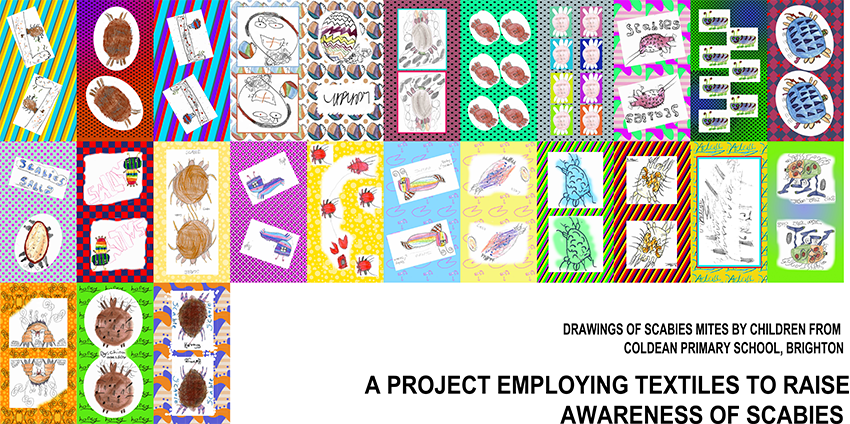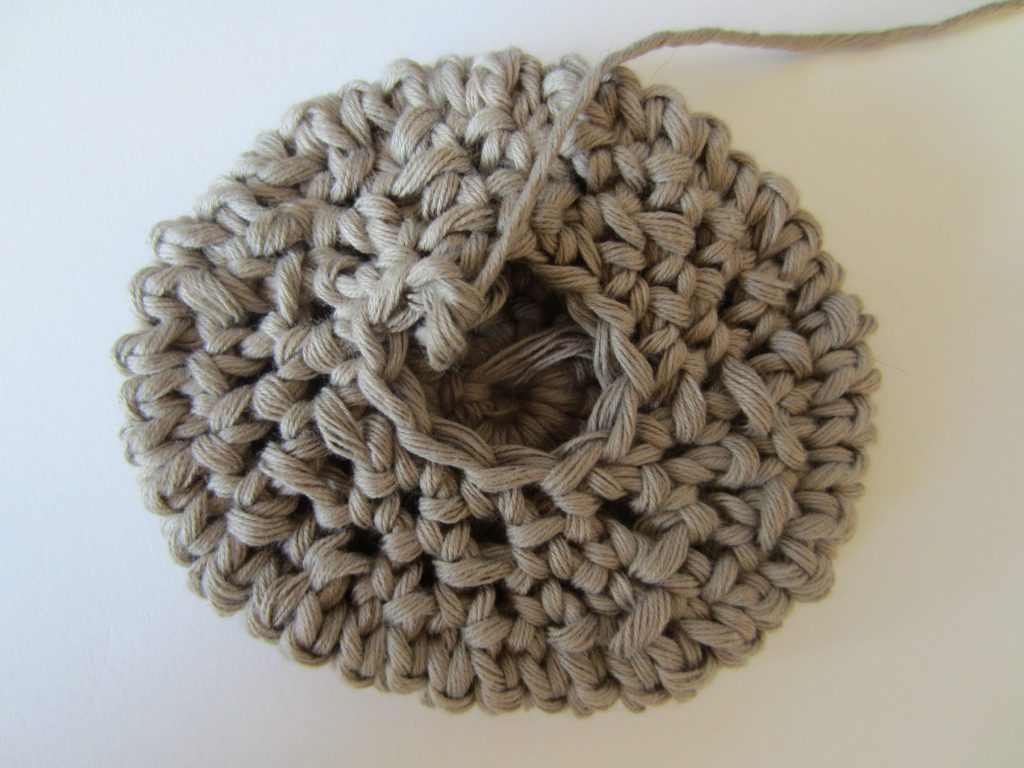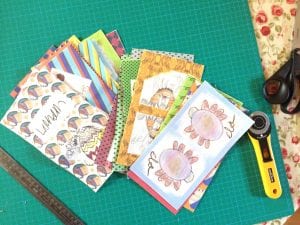TEXTILES AS A MEDIUM FOR RAISING AWARENESS ABOUT SCABIES
Why bean bags?
When planning the project, the idea of making a game that the children could play involving scabies in some way was extremely important to me. I went through a number of iterations, and was quite enamoured with my own adaptation of the classic board game Busy Bumble Bees, but how to make something like the head straps, and using magnets etc all seemed a bit complicated.
Trawling the internet and making sketches led me to the games we used to organise at school fetes, and in particular throwing things into receptacles, always a popular activity!
Clearly hard objects would not be a good idea, and textiles are soft, so fabric balls or pom poms were also considered. Then I remembered school games throwing bean bags around, and I was hooked.
First attempts involved crochet, as this van produce a lovely elliptical, 3D shape.
However this would have needed an inner liner into which the beans could be filled, otherwise they would pop out of the stitches. Both the logistics of teaching 50+ children to crochet a circle, and then making the inners made this impractical.
But the inner was a start.
I then tried some fabric tests to see if it would be possible to emulate the ridged scales on the scabies’ backs.
Again it was fiddly and time consuming so not ideal for working with children, and flat brightly coloured fabric was decided to be the best option.
Fabric bean bags
Having decided on that the bean bags were going to be sewn by the children out of brightly coloured fabric remnants, I was having lunch with friend who is a quilter, and what she was talking about changed my ideas. She was having some lengths of fabric digitally printed with her designs, and I thought how wonderful it would be to have the children draw scabies mites and then have their drawings printed onto fabric that they then made into beanbags.
So Workshop 1 would have to involve a drawing session. To give them background information and inspiration for the whole project, Stef was already going to give an illustrated talk about scabies, so by adding in even more photos of scabies this would be prefect.
Testing out bean bag patterns
The bean bags could be round, square or triangular, but round involves more complex cutting so was excluded early on – see the rather lumpy circular inner above for why this was not practical.
I made some triangular ones on which I drew some patterns to emulate the children’s drawings, and then put them into a video to see how they looked in movement.
- cutting , decorating and sewing the bean bag
There is a link to download the pattern for the bean bag further on down the page.
- Filling, and closing the finished bean bag
Go to the Workshop 1 blog posting
Go to Workshop pages for more about running the workshops
Preparing the scans of the children’s drawings for digital printing
The children’s drawings were in pencil and coloured pencil, on white paper. This meant that the lines were thin and the colour very light, so some editing was required. On top of that they had been drawn on A4 paper, so their proportions did not match that of the beanbag pattern.
Scans should be at 200dpi.
Firstly edit the images, I used Photoshop so the instructions are for that software, but other image editing software such as Affinity Photo, Sketch, GIMP, Pixelmator Pro, Pixlr, Corel PHOTO-PAINT, Paint.net, SumoPaint etc should also work.
Click at the end of this sentence to download a blank Photoshop 12cm x 22cm template for an individual beanbag into which you can paste or drop the image: 12×22 template-27sqxw9. This template includes guides for 1cm seam allowances and on the centre fold.
- Open the scanned image and save as a new file name.
- Crop to remove any blank background.
- Enhance the colour and thicken the lines as described in the ‘Photoshop-25hmcek’ pdf file below.
- Resize to fit into a rectangle that is 1ocm x 20cm (size of the beanbag fabric less seam allowances) but keep the resolution at 200dpi. Depending on the proportions of the image, this may mean copying the image so that one will be on the front and one on the back.
- Open the template file, make a new layer and copy and paste the image into this.
- Make a new layer, drag it below the image layer and add any background pattern to this.
- Save as a Photoshop file.
- Flatten the layers and save as a .jpg file.
Click here to download a pdf file explaining how to edit the images in Photoshop: Photoshop-25hmcek
Preparing the file for digital printing
The company I chose to print the fabric was Print me Pretty (http://www.printmepretty.co.uk/) but you could use another company; there are a number you could source online, such as the Silk Bureau. Cost was approximately £18 a metre for the heavier weight 150cm wide cotton, plus postage; but of course this is subject to increase.
I believe the format of the files is common to most digital printers, but Print me Pretty required the image to be 200dpi or above, but not to exceed 40mb. My calculation to fit as many 12cm x 22cm beanbag flats as possible into the 150cm width fabric led to a grid of 11 wide x 3 high. I dropped the individual images into this grid. Because I wanted a copy for exhibition I made two file that were just images, and another that included text (shown below).
The only problem was that the children were asked to write their names on their drawing, but not everyone did this. Some wrote on the back, which did not get scanned in. So I am hoping that their teachers will be able to show them these images before the next workshop so that they can identify their own beanbags from them.

First page of beanbags – as prepared for digital printing file. Please note that this image is copyrighted and may not be reproduced in whole or part.

Second page of beanbags – as prepared for digital printing file. Please note that this image is copyrighted and may not be reproduced in whole or part.
Making the final beanbags
The individual rectangles had to be cut out of the fabric – I used a rotary knife and a metal ruler on a self0healing cutting mat to do this efficiently and quickly.
- Cutting out the beanbags
Once they were all cut the side seams were sewn closed to turn them into open-topped bags.
Its most efficient to sew along one side, in this case the right hand side seam, of all the bags one after the other without cutting the thread after each one.
Next, cut the joining threads and turn the bags the right side out. Use a point-turner or scissors to poke out the corners – but be careful not to cut the stitches if using scissors!
The rice filling was weighed into equal amounts and each bag filled. Finally the top seam was sewn closed.
- Sewn beanbags, fillled and then sewn closed along the top edge
Link to the Patterns page of downloadable files (both bean bags and scabies mites)
or Direct download of bean bag pattern only



















